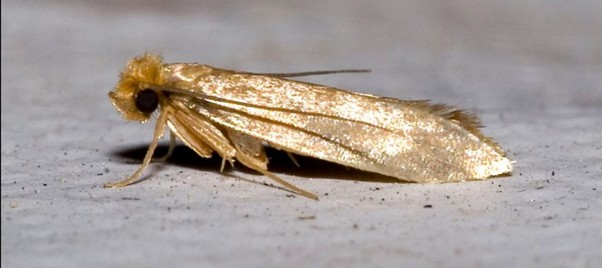Carpet moths are a common pest in UK homes, quietly eating through carpets, rugs, and upholstery with their persistent larvae. For residents dealing with these invaders, a key question often pops up: Are carpet moths dangerous? The short answer is no—they don’t directly harm human health like some pests, but they’re far from harmless. From costly property damage to minor allergen risks, carpet moths pack a punch worth addressing. ThermoPest, a UK pest control specialist, offers powerful solutions like heat treatment to eliminate them—check out our heat treatment page for details.
In this guide, we’ll explore what makes carpet moths a concern for UK residents, answer are carpet moths dangerous? from health and home angles, and show how ThermoPest can help. We’ll also tap into expert insights, like those from The British Pest Control Association (BPCA), to give you a full picture. Let’s dive in and sort fact from fiction.

The Basics: What Are Carpet Moths?
Carpet moths—mainly the common clothes moth (Tineola bisselliella) and case-bearing clothes moth (Tinea pellionella)—are small insects whose larvae thrive on natural fibres like wool, silk, and feathers. Adults are harmless fliers, but their larvae chew through fabrics, leaving damage in their wake. The UK’s damp climate and fondness for wool carpets make it a hotspot for these pests. So, are carpet moths dangerous? Not to your health in a direct sense, but their knack for destruction can sting financially and emotionally. For more on their biology, see our moth information page or the Natural History Museum’s moth guide.
Are Carpet Moths Dangerous to Your Health?
Let’s tackle the big question: Are carpet moths dangerous to people? Unlike bed bugs or rats, carpet moths don’t bite, sting, or spread diseases. Adult moths don’t feed—they just lay eggs and expire. The larvae, though fabric-munchers, don’t physically harm humans. That said, their shed skins, frass (droppings), and silky webs can mix with dust, possibly causing allergic reactions or breathing issues in sensitive folks—think asthmatics or allergy-prone UK residents in stuffy homes.
This risk is small—comparable to dust mites—and rarely serious. The NHS page on allergies notes such triggers are manageable for most. So, are carpet moths dangerous health-wise? Not really—they’re not a medical red alert. Their true threat lies elsewhere, and we’ll get to that.
The Real Danger: Property Damage
If are carpet moths dangerous to your health isn’t a firm yes, their toll on your home is undeniable. Carpet moth larvae are relentless, feasting on keratin in natural fibres. A minor infestation can balloon fast, leaving bald patches on wool carpets, holes in rugs, or shredded upholstery. In older UK homes with treasured textiles—like a vintage rug or family heirloom—the damage can be devastating and pricey. Repairing or replacing these items can run into hundreds of pounds.
Their lifecycle fuels this danger: eggs hatch in 4-10 days, larvae feed for weeks or months, spinning webs as they go. Untreated, a handful of moths turn into a wrecking crew. Are carpet moths dangerous to your property? Yes—they’re a silent menace. ThermoPest halts them with heat treatment—contact us to safeguard your space.
Can Carpet Moths Affect Your Mental Wellbeing?
Beyond physical harm, there’s a subtler risk: your mental state. Realizing are carpet moths dangerous to your prized possessions can spark anxiety and irritation. The ongoing worry of new damage or the chore of battling them wears you down. In the UK, where homes often hold sentimental value, this emotional hit matters. It’s not a health crisis, but it’s a burden worth addressing. ThermoPest’s heat treatment wipes out infestations fast, restoring your calm.
Signs You’re Dealing with Carpet Moths
To gauge are carpet moths dangerous in your home, spot them early. Watch for:
- Bald Patches: Irregular spots on carpets or rugs where fibres vanish.
- Silky Webs or Cocoons: Fine threads or tubes blending into fabrics.
- Larvae: Cream grubs, 5-10mm, lurking in dark corners or under furniture.
- Adult Moths: Small (6-8mm wingspan), golden or grey, fluttering near lights.
- Frass: Sand-like droppings near chewed areas.
Seeing these? Damage is underway. Our moth information page dives deeper into identification.
Why DIY Methods Fall Short
UK residents often turn to DIY—vacuuming, steaming, or repellents—hoping to settle are carpet moths dangerous cheaply. These cut visible moths but miss eggs and hidden larvae. Vacuuming skips deep fibres, steaming lacks reach, and cedar only deters adults. The danger lingers as moths rebound. ThermoPest’s heat treatment, hitting over 55°C, kills all stages in one shot—chemical-free and thorough. See why it works at our treatment page.
ThermoPest’s Solutions: Safe and Effective
So, are carpet moths dangerous enough for pros? With their property damage potential, yes—ThermoPest delivers. Our heat treatment heats areas to over 55°C, wiping out moths, larvae, and eggs instantly. It’s eco-friendly and residue-free, ideal for UK homes. We also offer safe chemical options for those who prefer them. Both end the threat fast—contact us to book.
Prevention Tips for UK Homes
Post-treatment, keep moths out:
- Vacuum often, though it won’t kill eggs.
- Store fabrics in sealed containers with lavender.
- Cut dampness with dehumidifiers—moths thrive in it.
- Use sticky traps to spot adults early.
ThermoPest offers custom tips for lasting protection.
Final Thoughts on Are Carpet Moths Dangerous?
So, are carpet moths dangerous? Not directly to health—they don’t bite or spread illness—but their danger hits your home and wellbeing. UK residents face a real challenge with our climate and textiles, demanding quick action. ThermoPest’s heat treatment is a safe, effective fix—explore it at our treatment page, check moth facts at our moth page, or contact us. They may not endanger your life, but they don’t belong in your home—let’s banish them for good.
